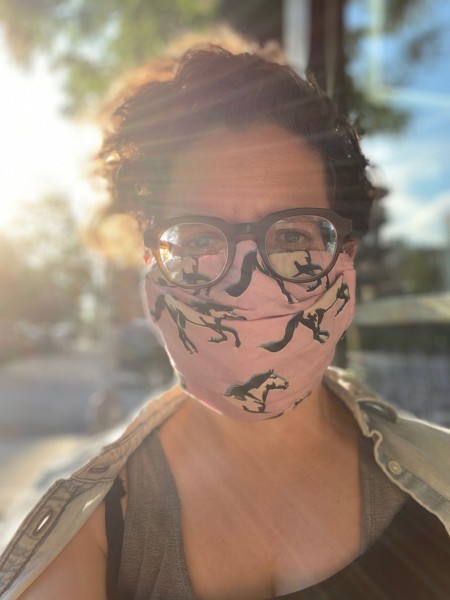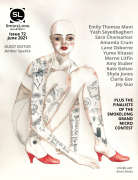I’m struck right away with the dichotomy of that first sentence: “The party room at the Monroeville Build-A-Bear is also the storage room.” It pulls us right in and creates tension. Can you discuss the import of this first line (which is later repeated)?
What I like about writing flash is the challenge of getting every line to do different things at once. Also, when I’m working on fiction I tend to write setting first. When I wrote my first draft there were a few things swimming around in my head: the Bruce McAllister short story, “Kin,” Kristen Arnett’s new novel, With Teeth, and a viral Twitter thread about mall stores from the 90s that had gone out of business. My first draft opened with a paragraph about the mall and the town of Monroeville; the imagery was beautiful and weird, but it wasn’t working hard enough for flash. When I was revising, I realized I was writing about banal magic, how common and unspecial it is to be propelled into adulthood by entirely inexplicable events. Once I understood that, I rewrote the first line to establish the setting, the premise, and the ordinariness of both.
The description of the various “animal skins” in bins is wonderful and creepy. Of course, they serve as the story’s major symbol. What inspired you?
I’d been thinking a lot about J.K. Rowling and her descent into anti-trans violence. It is horrifying. The Harry Potter books were so important for me as a kid, but I just don’t want anything to do with them anymore. So I was thinking about the lore of the Sorting Hat, and I wanted to reject it. Instead of the hat—this foreign object that reads your thoughts and tells you where you’re going in life—I wanted to write into a moment in which the children know, all by themselves, what they need. And Phoebe honors them for it.
I love this: “Of course this is a story about wishes. What else are birthday parties for? Why do we spend so little time contemplating the sweet brutality of our short lives? Why do we punish ourselves for wanting more?” It’s crushing, and moving, and comforting, all at once, especially as it comes just before the stuffed Build-a-Bears are handed out to the children. Was this—almost a literary gasp—your intention for this particular moment in the story?
In this moment of the story, I was thinking about the parents of the birthday children. I imagined they would be curious about the exchange between their children and Phoebe, but also completely incredulous, so I think I was preemptively responding to that resistance. It really set me off!
Yes—this story has weight, but it’s also lifted by a little humor (particularly the paragraph that describes the Monroeville store as having gone a bit “off-piste”), which seems appropriate since you are also a comedian. What’s the usual role of humor in your writing?
I’m still figuring that out! Standup has taught me a lot about word economy and order, sounds, and cadence (and how to use those tools to build and cut tension), but I have trouble identifying the humor in my fiction. I haven’t been writing for very long. In workshop this year I’ve had to work a lot on examining where I’m using humor effectively and where I’m doing things like undercutting myself with a joke. It’s a lazy habit. The P in “piste” is a funny sound, though. I got that from Gary Gulman’s comedy writing tips.
Do you have a creative project underway right now?
I just finished my first year of an MFA program, and being on Zoom full time was a challenge, so I’ve been craving creative projects that don’t involve looking at computer screens. Right now I’m doing a lot of drawing and knitting. I make a lot of ice cream. I’m looking forward to working on ideas by talking them out with friends and family in person, and doing comedy in person again. I’m working on a short story about lesbians and their childhood dolls, and I’m thinking about a full-length project for the future, but mostly I’m taking a break.



 The SmokeLong Grand Micro Contest (The Mikey) is now an annual competition celebrating and compensating the best micro fiction and nonfiction online.
The SmokeLong Grand Micro Contest (The Mikey) is now an annual competition celebrating and compensating the best micro fiction and nonfiction online.